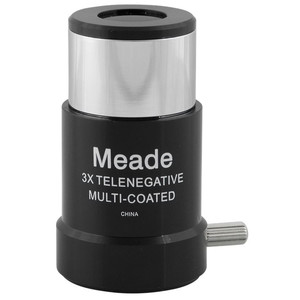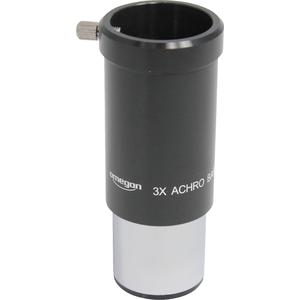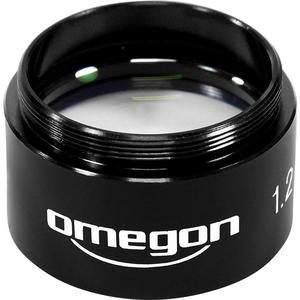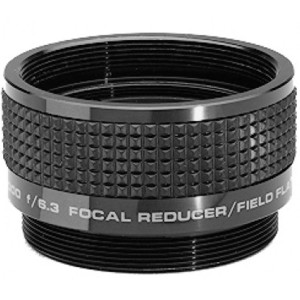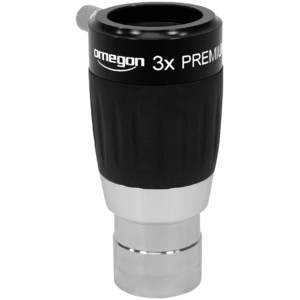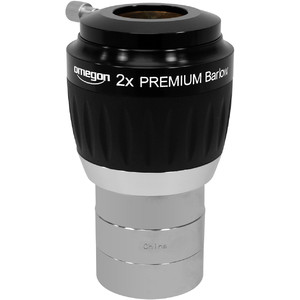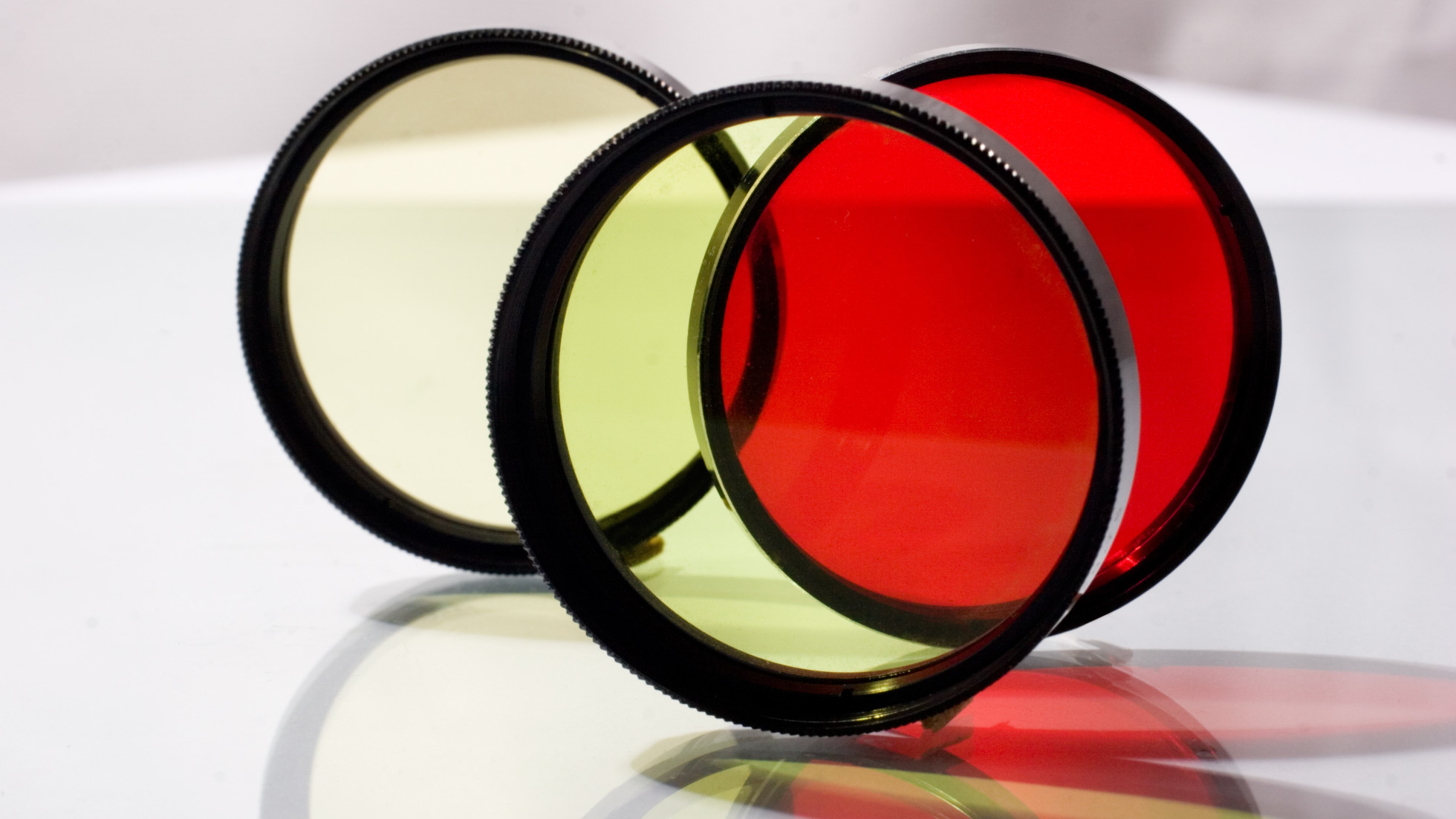Barlow and Shapley lenses
Longer focal length and higher magnification? You can achieve this with a Barlow lens, but when does it make sense and when doesn't it?
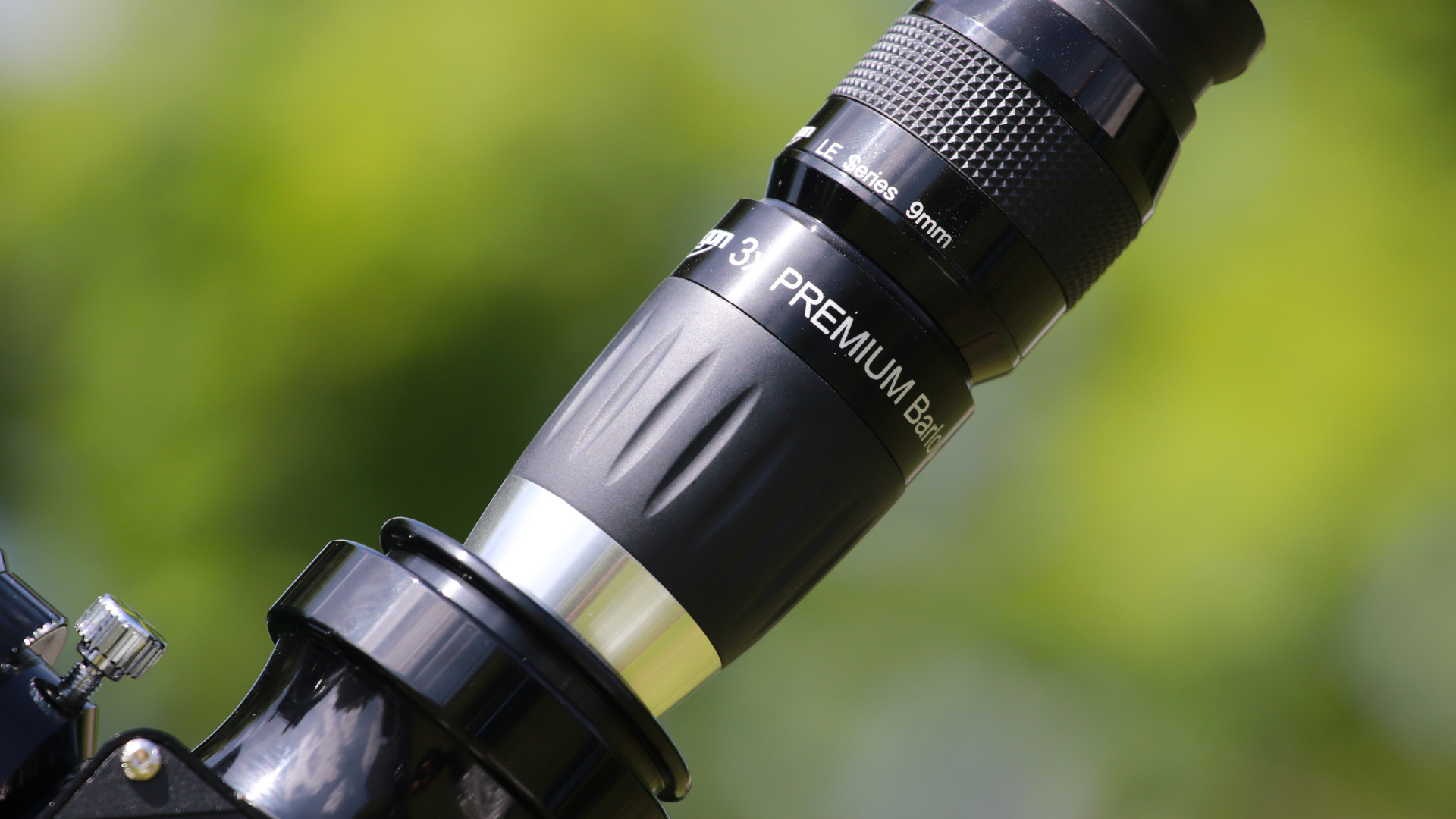
What exactly is a Barlow lens?
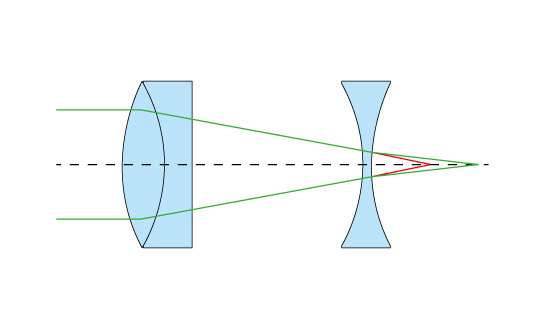
A Barlow lens is an optical component which is deployed between the eyepiece and the focuser. Inside there is a negative lens, which artificially lengthens the focal length of the telescope. Often the Barlow lens is not a single lens, but a system of lenses. This usually also serves to reduce chromatic aberration. In this case the lens is often referred to as an achromatic Barlow lens. The standard lenses have a 2x magnification factor.
This is how a Barlow lens works
The function of such a lens can best be explained using an example: let us look at a 200/1000-mm Newtonian reflector, such as the Omegon Advanced telescope. In addition, an eyepiece with a 6 mm focal length is used. The magnification formula results in a 166x magnification. The lens extends the focal length of the telescope by a factor of 2 from 1000 mm to 2000 mm. Using the same eyepiece, this results in a twofold magnification of more than 330x.
So with an eyepiece and a Barlow lens you can get two different levels of magnification. Of course, you have a much larger variation range with a selection of eyepieces and a Barlow lens.
But there's a problem
A Barlow lens is an additional component that contains lens elements. Each lens reflects light on its optical surfaces and additionally absorbs it in the lens material. This results in less light arriving at your eye. Therefore, you should consider when a Barlow lens might be useful. Preferably, it should not be used as a substitute for a good eyepiece. There are meanwhile high-quality Barlow lenses that deliver a good image, however these tend to be in the somewhat higher price bracket. Another area where the lenses can make a lot of sense is planetary photography.
Barlow lenses are actually essential in this field of astrophotography. Since astronomical cameras are often used to photograph planets, it makes sense to buy a Barlow lens with a high focal length extension factor. These lenses are available with a factor of 3 or 5 times.
Reducer - reducing the focal length with lenses
Besides Barlow lenses, there are also lenses that shorten a telescope’s focal length. They used to be called Shapley lenses, but are nowadays known as reducers. While a negative lens provides for the extension effect in the case of the Barlow lens construction, a reducer works in the opposite way. It is equipped with a positive lens with the effect of decreasing the telescope's focal length. Often this component consists of a combination of several lenses.
Reducers for photography
These lenses are usually used in Cassegrain telescopes and their Schmidt-Cassegrain or Maksutov-Cassegrain derivatives. These systems all have a relatively long focal length. The focal ratio is usually 1:10 or more.
A 250-mm Schmidt-Cassegrain telescope has a focal length of 2,500 mm at a focal ratio of 1:10. This can be too much for some purposes. Since this focal length produces a very small field of view, without a reducer, you would have no chance to capture large objects on the camera’s chip. However, there are no universal reducers, they are usually designed for specific telescopes. The downsides that you will need to accept as a trade-off are significant image errors and possible vignetting (shading).
Recommended Barlow and Shapley lenses
